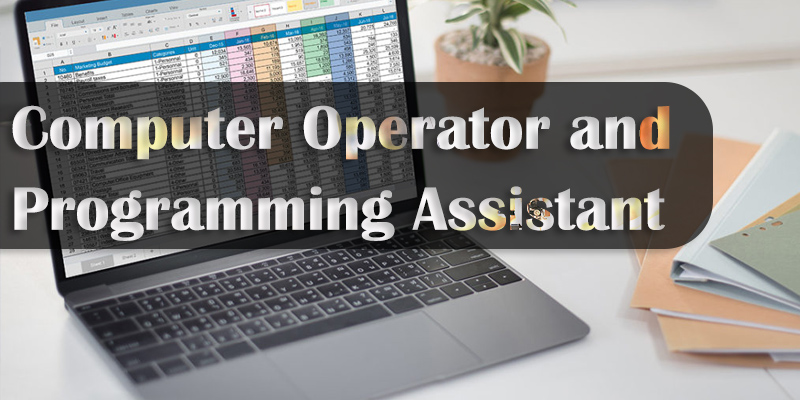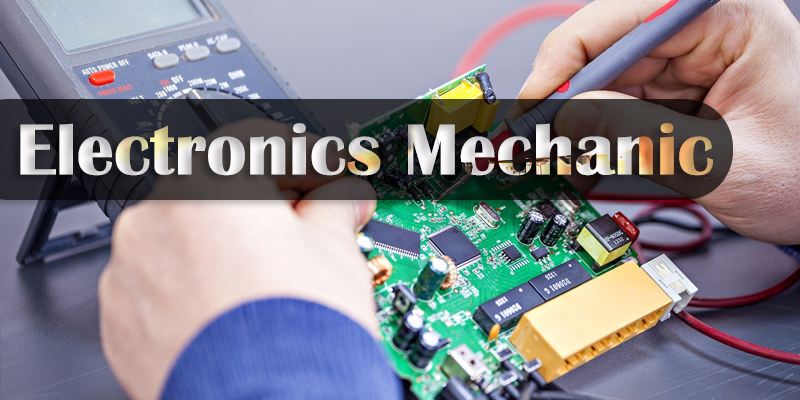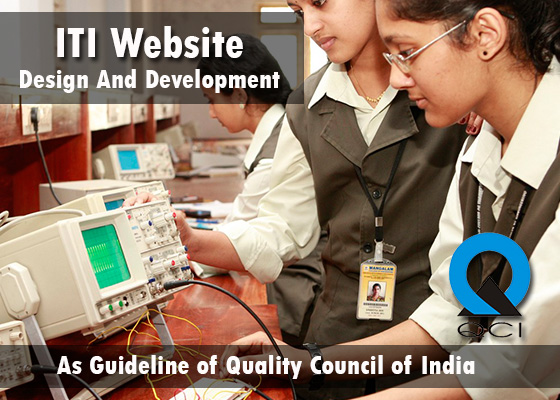Government Industrial Training Institute (Woman), Bhandara, Dist: Bhandara

Government Industrial Training Institute (Woman), Bhandara, Dist: Bhandara is situated in Bhandara Maharashtra. Government Industrial Training Institute (Woman), Bhandara, Dist: Bhandara is Industrial Training Institute under NCVT Government Industrial Training Institute (Woman), Bhandara, Dist: Bhandara. Location of Government Industrial Training Institute (Woman), Bhandara, Dist: Bhandara is New Takli, Warthi Road Bhandara Maharashtra.
Government ITI
Government ITI is leading educational organisatin in india. Teching facualty of Government ITI is suprimo. ITI is providing latest Job oriened cource for student. This Government ITI is powerd by 'Ministry of Skill Development and Entrepreneurship, Government of India for Craftsmen Training Scheme .
Maharashtra
Mission
- Directorate Of Vocational Education & Training, Mumbai is committed to provide quality administration and vocational education and training services to educational institutes, Industrial Training Institutes and NGOs in Maharashtra State to meet the needs of industry , business to service sector and society at large.
Vision
- Encouraging institutes for developing human resources to reduce the mismatch between demand and supply of manpower in various sectors like Engineering, Information Technology, Agriculture, Paramedical, Home Science, Trade & Commerce.
- To reduce unemployment among youth by equipping them for suitable industrial, self & wage employment through well designed formal & non formal Vocational Education & Training programmes at Various institutes.
- Establishing linkages with industry / Institutes / R & D organizations Pass out students / Apprentices for mutual benefits.
- Arranging quality development programmes for Principals, Teachers, Instructors, Staff & Students thereby creating a dynamic learning environment.
- Establishing Centres of Execellence at various key institutes in emerging areas like Automobile, Production & Manufacturing, Non-conventional energy sources, CNC/CAD/CAM & Information Techonology.
- Establishing seperate website for the office & to link all institutes & controlling offices through Internet to use web conferencing media for meetings of District officers & Principals thereby increasing speed, accuracy & economy in flow of information.
- Facilitating the alround development of students by conducting various activities like Quiz, Entrepreneurship programmes, Sports & different competitions.
- Developing various computer softwares for the standardization of procedures of stores, admissions, examinations, administration & Apprecnticeship scheme.
Core Values
- Transperancy
- Equity
- Efficiency
- Quality & Excellence
प्रवेशप्रक्रीयेमध्ये सहभागी होणाऱ्या प्रवेशोच्छुक उमेदवारांच्या सोईसाठी "MahaITI App" नावाचे Android App ची रचना संचालनालयाकडून करण्यात आली आहे. उमेदवारांनी Google Play Store मधुन सदर App Download करुन घ्यावे. सदर App व्दारे उमेदवार त्यांचा अर्ज, निवडपत्र, प्रवेश निश्चितीची पावती इत्यादी बाबी Download करु शकतात. तसेच उमेदवार आपला अर्जातील विकल्प देखील वेळोवेळी सादर करु शकतात. सबब, अधिकाधिक उमेदवारांनी सदर सुविधेचा लाभ घ्यावा.
Baker and Confectioner

ITI trade Baker and Confectioner is powered by NCVT. ITI trade Baker and Confectioner is a job oriented trade ITI trade Baker and Confectioner is suitable for government job and private job. This ITI trade Baker and Confectioner is very powerful for self-empowerment. This ITI trade Baker and Confectioner is perfectly design to fulfill industrial requirement of Indian Industries as well as International industries.
Baker & Confectioner performs and supervises workers while baking and confectionery tasks, weighing, mixing of ingredients, adding flavour and colour to dough or paste, moulding, shaping, cutting and wrapping of soft or hard stuff of finished bakery or confectionery products. Ensures quality and rate of production and maintains cleanliness during operations.
Baker & Confectioner has a wide scope of Employability ranging from self-employment, contractual employment to Hotels, restaurant kitchen. On successful completion of this course, the candidates shall be gainfully employed in the Hotel industries for following occupations:
- Bakers
- Pastry-Cooks
- Confectionery Makers
Basic Cosmetology

ITI trade Basic Cosmetology is powered by NCVT. ITI trade Basic Cosmetology is a job oriented trade ITI trade Basic Cosmetology is suitable for government job and private job. This ITI trade Basic Cosmetology is very powerful for self-empowerment. This ITI trade Basic Cosmetology is perfectly design to fulfill industrial requirement of Indian Industries as well as International industries. Cosmetology is the art and science of beautifying and improving the skin, hair, and the study of cosmetics and their application. This course is designed to teach the student basic fundamentals of all phases of cosmetology and prepare them to gain entrance into the beginning level job as a qualified cosmetologist. As a licensed cosmetologist you can specialize in one area, be a total cosmetologist, become a platform artist, own your own salon and much more. This course prepares the student for employment in the cosmetology industry as a Hairstylist, Manicurist, Facialist, and Salon Owner or as a Technician in the cosmetology products industry. It is also a prerequisite to further study as a Cosmetology Instructor.
A trainee attending the course on ‘Basic Cosmetology’ shall be able to perform basic Epilation, Manicure, Pedicure, Facial Treatments, Haircuts, Hair Styles, Hair Coloring, Straightening, Rebinding and Hair treatments. The trainee shall be able to demonstrate different types of makeup and basic corrective makeup. The trainee shall also be able to perform and demonstrate Yogasana and Meditation
Successful candidates will be able to work as Beautician, Hair Dresser, Make-up Artist, Manicurist, Pedicurist, Hair Stylist, Slimming Assistant, Hair Colorist and Yoga trainer
Qualifying trainee shall obtain an NCVT Certificate in ‘Basic Cosmetology’ trade which places the trainee in a position to investigate requirements for progression to a National Apprenticeship Certificate or National Craft Instructor Certificat .This qualification shall enable the trainee to find employment as a skilled worker.
Computer Operator and Programming Assistant (COPA)

ITI trade Computer Operator and Programming Assistant (COPA) is powered by NCVT. ITI trade Computer Operator and Programming Assistant (COPA) is a job oriented trade ITI trade Computer Operator and Programming Assistant (COPA) is suitable for government job and private job. This ITI trade Computer Operator and Programming Assistant (COPA) is very powerful for self-empowerment. This ITI trade Computer Operator and Programming Assistant (COPA) is perfectly design to fulfill industrial requirement of Indian Industries as well as International industries.
The individual can work as both Computer Operator/ Programming Assistant; operates computer and peripheral equipment to process business, scientific, engineering, or other data, according to operating instructions. As programming assistant installs, maintains and updates computer programs by making minor changes and adjustments to them under the guidance of computing professionals. Maintains and updates documents of computer programs and installations with assistance under supervision of supervisor
On successful completion of this course the candidates shall be gainfully employed as:
- Computer Operator
- Programming Assistant
Cosmetology

During one-year duration of ‘Cosmetology’ trade, a candidate is trained on Professional Skill, Professional Knowledge and Employability Skill related to job role. In addition to this, a candidate is entrusted to undertake project work, extracurricular activities and on-the-job training to build up confidence. The broad components covered under Professional Skill subject are as below:
During one-year duration of ‘Cosmetology’ trade, a candidate is trained on Professional Skill, Professional Knowledge and Employability Skill related to job role. In addition to this, a candidate is entrusted to undertake project work, extracurricular activities and on-the-job training to build up confidence. The broad components covered under Professional Skill subject are as below:
The learner learns to illustrate and explain structure of hair; create basic haircuts using special cutting techniques; demonstrate basic yogic exercises for stamina building and correcting body posture; demonstrate day, evening, party & bridal makeup and explain effects of light on makeup. He/she learns to create traditional hair styles & hair designing with artificial aids and thermal gadgets; demonstrate hair colouring, perming, straightening, rebonding & smoothing. Also, the trainee is able to explain the knowledge of bonds; create bindi, heena & tattoo designing, drape saree in different styles and demonstrate asanas for spine stretching, stress management & common body ailments after completion of this course.
TRAINING SYSTEM
The Directorate General of Training (DGT) under Ministry of Skill Development & Entrepreneurship offers a range of vocational training courses catering to the need of different sectors of economy/ Labour market. The vocational training programmes are delivered under the aegis of Directorate General of Training (DGT). Craftsman Training Scheme (CTS) with variants and Apprenticeship Training Scheme (ATS) are two pioneer schemes of DGT for strengthening vocational training.
Cosmetology trade under CTS is one of the popular courses delivered nationwide through a network of ITIs. The course is of one-year duration. It mainly consists of Domain area and Core area. The Domain area (Trade Theory & Practical) imparts professional skills and knowledge, while the core area (Employability Skill) imparts requisite core skills, knowledge, and life skills. After passing out the training program, the trainee is awarded National Trade Certificate (NTC) by DGT which is recognized worldwide.
Candidates broadly need to demonstrate that they are able to:
- Read and interpret technical parameters/documents, plan and organize work processes, identify necessary materials and tools;
- Perform tasks with due consideration to safety rules, accident prevention regulations and environmental protection stipulations;
- Apply professional skill, knowledge & employability skills while performing jobs.
- Document the technical parameters related to the task undertaken.
JOB ROLE
Skin Care Specialist; provides skin care treatments to face and body to enhance an individual's appearance. Advises clients about colors and types of make-up and instruct them in make-up application techniques. Applies chemical peels in order to reduce fine lines and age spots. Cleanses clients’ skin with water, creams and/or lotions. Demonstrates how to clean and care for skin properly and recommend skin-care regimens. Determines which products or colors will improve clients' skin quality and appearance. Examines clients' skin, using magnifying lamps or visors when necessary, in order to evaluate skin condition and appearance. Keeps records of client needs and preferences, and the services provided. Performs simple extractions to remove blackheads. Removes body and facial hair by applying wax. Selects and applies cosmetic products such as creams, lotions, and tonics.
Beautician; gives various forms of beauty treatment to clients. Examines clients’ skin and suggests suitable treatment. Applies lotions, creams and packs to stimulate circulation, lubricate tissues and remove wrinkles and lines. Massages face, neck, arms, legs or other parts of body and gives treatment for superficial skin blemishes. Removes superfluous hair by wax treatment or other method. Shapes, colors and otherwise treats eyebrows and eyelashes and applies cosmetics and advises on suitable make-up. May cut, comb and wave hair according to clients’ instructions or according to particular style, tint or dye hair, and give scalp treatment. May clean, shape and polish fingernails.
Assistant Beautician; needs to be aware of the basics of beauty therapy, health and hygiene, safety and needs to be knowledgeable about various beauty products. Assistant Beautician is expected to perform basic epilation, manicure, pedicure and basic face care services and also assist the beautician in providing advanced services. The person also assists in salon ambience maintenance and also does various other odd jobs in the salon including sell salon retail products after obtaining knowledge on them.
Beauticians and Related Workers, Others; Hairdressers, Barbers, Beauticians and Related Workers, other include all other hairdressers, barbers, beauticians and related workers not elsewhere classified.
Pedicurist and Manicurist; needs to be aware of the basics of pedicure and manicure, health and safety, hygiene and needs to be knowledgeable about various beauty products. The roleholder is expected to independently provide services of pedicure and manicure while performing some other assisting services.
Hairdresser (Ladies); cuts, washes, dyes and waves hair and performs other personal services incidental to hair dressing of women. Covers clothing of clients with towel or apron to avoid sticking of cut hair. Cuts hair according to instructions of client or according to a particular style using clippers, scissors, razors and combs. Washes, rinses and dries hair, using shampoos and solutions as necessary and bleaches, dyes or tints hair. Waves hair by wrapping it with round curlers, adding wave solutions and performing other tasks to obtain required effect. Sets hair in desired style by combing. May clean, shape and polish fingernails. May give scalp treatment to clients.
Hair Stylist; specializes in dressing hair according to latest style, period, or character portrayal, following instructions of patron MAKE-UP ARTIST, or script: Questions patron or reads instructions of MAKE-UP ARTIST or script to determine hairdressing requirements. Studies facial features of patron or performing artist and arranges, shapes, and trims hair to achieve desired effect, using fingers, combs, barber scissors, hair-waving solutions, hairpins, and other accessories. Dyes, tints, bleaches, or curls or waves hair as required. May create new style especially for patron. May clean and style wigs. May style hairpieces.
LEARNING OUTCOME
Learning outcomes are a reflection of total competencies of a trainee and assessment will be carried out as per the assessment criteria.
- 1. Develop good appearance and behaviour, practice tasks as per industry standard and express good communication skill following safety precautions.
- 2. Prepare and maintain work area and maintain health and safety at the workplace.
- 3. Carry out epilation and depilation services. Illustrate and explain hair structure & hair growth cycle.
- 4. Carry out manicure and pedicure services. Explain anatomy of nail. Differentiate and identify nail disease nail disorders.
- 5. Carry out facial treatments for common skin problems. Illustrate and explain skin structure.
- 6. Carry out hair treatment for common hair problems. Illustrate and explain structure of hair.
- 7. Create basic haircuts using special cutting techniques.
- 8. Demonstrate basic yogic exercises for stamina building and correcting body posture
- 9. Demonstrate day, evening, party & bridal makeup and explain effects of light on makeup.
- 10. Create traditional hair styles & hair designing with artificial aids and thermal gadgets.
- 11. Demonstrate hair colouring, perming, straightening, rebonding & smoothening. Explain the knowledge of bonds.
- 12. Create bindi, heena & temporary tattoo designing, drape saree in different styles.
Dress Making

ITI trade Dress Making is powered by NCVT. ITI trade Dress Making is a job oriented trade ITI trade Dress Making is suitable for government job and private job. This ITI trade Dress Making is very powerful for self-empowerment. This ITI trade Dress Making is perfectly design to fulfill industrial requirement of Indian Industries as well as International industries.
A trainee of the course ‘Dress Making’ constructs dresses for children (Yoke Frock), dresses for teenagers, ladies dress, ladies suit, ladies night wear, ladies blouse, gents shirt, and gents trouser, according the sketched designs and blocks using adaptation/draping and manipulation techniques. The trainee also practices, maintains and troubleshoots basic sewing machines and over-lock machines. The course is meant for a trainee who aspires to become a Sewing Machine operator, Designer to a Boutique, Stylist in Boutique, Consultant to a Boutique, Be-spoke designer, Design Assistant in Export units, Design service in e-tailing, and Assistant Production Merchandiser
The qualification gives access to jobs such as Sewing Machine operator, Designer to a Boutique, Stylist in Boutique, Consultant to a Boutique, Be-spoke designer, Design Assistant in Export units, Design service in e-tailing, Assistant Production Merchandiser.
This qualification will enable the trainee to find employment as a skilled worker to perform jobs in the Dress Making field
Dressmaking

ITI trade Dressmaking is powered by NCVT. ITI trade Dressmaking is a job oriented trade ITI trade Dressmaking is suitable for government job and private job. This ITI trade Dressmaking is very powerful for self-empowerment. This ITI trade Dressmaking is perfectly design to fulfill industrial requirement of Indian Industries as well as International industries.
A trainee of the course ‘Dress Making’ constructs dresses for children (Yoke Frock), dresses for teenagers, ladies dress, ladies suit, ladies night wear, ladies blouse, gents shirt, and gents trouser, according the sketched designs and blocks using adaptation/draping and manipulation techniques. The trainee also practices, maintains and troubleshoots basic sewing machines and over-lock machines. The course is meant for a trainee who aspires to become a Sewing Machine operator, Designer to a Boutique, Stylist in Boutique, Consultant to a Boutique, Be-spoke designer, Design Assistant in Export units, Design service in e-tailing, and Assistant Production Merchandiser
The qualification gives access to jobs such as Sewing Machine operator, Designer to a Boutique, Stylist in Boutique, Consultant to a Boutique, Be-spoke designer, Design Assistant in Export units, Design service in e-tailing, Assistant Production Merchandiser.
This qualification will enable the trainee to find employment as a skilled worker to perform jobs in the Dress Making field
Electrician

ITI trade Electrician is powered by NCVT. ITI trade Electrician is a job oriented trade ITI trade Electrician is suitable for government job and private job. This ITI trade Electrician is very powerful for self-empowerment. This ITI trade Electrician is perfectly design to fulfill industrial requirement of Indian Industries as well as International industries.
- Electricians have a wide scope of Employability ranging from self-employment, contractual employment to Industrial jobs.
- After successful completion of this course, Electricians can aspire to become Electrical Contractors by acquiring the ‘B” licence from the Electrical Licence Board.
- They can set up their own Rewinding and servicing of Domestic Equipment shop.
- Job opportunities are wide open in Defence, Railways, Transport, Ship Building, Electricity Board, various Industries etc
- They can also go for further higher studies after successful completion of course.
- Students who have completed this course have found employment in the following areas:
- Service/Maintenance Technician for domestic appliances in Reputed Companies
- Winder of Electrical Motors in winding shop
- Contractor for domestic wiring and industrial wiring
- Armature winder of Electrical fans and motors
- Electrical appliance repair in electrical shops
- Indian Railway (Asst. Driver, Tech. Gr. III, Appr. Technician)
- Local Electricity Board
- Assembler of Electrical control Gears
- Telephone Department
- Installation and Testing division of Auditorium and Cinema Hall
- Factories
- As Instructor in Govt./Private ITI/ITC
- Merchant Navy
- Indian Air Force
- Self-Employment in Service Centre
Electronics Mechanic

ITI trade Electronics Mechanic is powered by NCVT. ITI trade Electronics Mechanic is a job oriented trade ITI trade Electronics Mechanic is suitable for government job and private job. This ITI trade Electronics Mechanic is very powerful for self-empowerment. This ITI trade Electronics Mechanic is perfectly design to fulfill industrial requirement of Indian Industries as well as International industries.
Brief description of job roles:
Electronics Fitter, General fits, assembles and repairs various kinds of electronic equipment in factory or workshop or at place of use. Examines drawings and wiring diagrams; checks parts for accuracy of fit and minor adjustments; assembles parts or mounts them on chassis or panels with aid of hand tools; installs and connects wiring, soldering joints equipment, diagnoses faults with aid of electronic testing equipment; dismantles equipment if required and replaces faulty parts or wiring.
Electronics Fitter, other include all other workers engaged in fitting, assembling, repairing and maintaining electronic equipment, machinery, appliances, etc., not elsewhere classified.
Electronics Mechanic; Electronic Equipment Mechanic repairs electronic equipment, such as computers, industrial controls, transmitters, and telemetering control systems following blueprints and manufacturer's specifications and using hand tools and test instruments. Tests faulty equipment and applies knowledge of functional operation of electronic units and systems to diagnose cause of malfunction. Tests electronic components and circuits to locate defects, using instruments, such as oscilloscopes, signal generators, ammeters and voltmeters. Replaces defective components and wiring and adjusts mechanical parts, using hand tools and soldering iron. Aligns, adjusts and calibrates testing instruments. Maintains records of repairs, calibrations and test.
Radio Technician (Radio Manufacturing) tests assembled radio sets with testing equipment to ensure that assembly soldering, frequency, performance, etc. are in accordance with prescribed standards. Places assembled radio set in position and visually examines it to ensure that position of components, connections, soldering, wiring, etc. are in order. Switches on and operates different knobs to check calibration, audibility and general performance of set by varying its tone and listening to various stations and frequencies. Tightens loose nuts and screws, locates faults, replaces defective components and conducts necessary changes. Approves correctly assembled sets for further processing and rejects defective ones for rectification. May tests sets at different stages of assembly. May service, repair and overhaul radio sets.
Solar Panel Installation Technician is also known as ‘Panel Installer’, the Solar Panel Installation Technician is responsible for installing solar panels at the customers’ premises. The individual at work checks the installation site, understands the layout requirement as per design, assesses precautionary measures to be taken, installs the solar panel as per customer’s requirement and ensures effective functioning of the system post installation.
Optical fibre technician is responsible for maintaining uptime and quality of the network segment (both optical media and equipment) assigned to him by undertaking periodic preventive maintenance activities and ensuring effective fault management in case of fault occurrence. He is also required to coordinate activities for installation and commissioning of Optical Fibre Cable (OF) as per the route plan.
Field Technician: UPS and Inverter is also called, ‘UPS repair Technician’, this is an after sales service job for installing and providing support to customers of different types of UPS and inverters. The individual at work installs the newly purchased UPS or inverter. The individual also and interacts with customers to diagnose problems in them, assesses possible causes, rectifies faults or replaces faulty modules or recommends factory repairs for bigger faults as per the route plan. Installation, service, repair and overhaul radio sets service centre. May install television sets.
Television Installation Man installs and adjusts television receivers and antennas, using hand tools. Selects antenna according to type of set and location of transmitting station. Bolts cross arms and dipole elements in position to assemble antenna. Secures antenna in place with bracket and guy wires, observing insurance codes and local ordinances to protect installation from lighting and other hazards. Drills and waterproofs holes in building to make passage for transmission line. Connects line between receiver and antenna and fastens it in place. Tunes receiver on all channels and adjusts screws to obtain desired density, linearity, focus and size of picture. Orients antenna and installs reflector to obtain strongest possible reception.
Cable Television Installer installs cable television cables and equipment on customer's premises, using electrician's tools and test equipment: Measures television signal strength at utility pole, using electronic test equipment. Computes impedance of wire from pole to house to determine additional resistance needed for reducing signal to desired level. Installs terminal boxes and strings lead-in wires, using electrician's tools. Connects television set to cable system and evaluates incoming signal. Adjusts and repairs cable system to ensure optimum reception. May collect installation fees and explain cable service operation to subscriber. May clean and maintain tools, test equipment.
Television Service and Repairman repairs and adjusts radios and television receivers, using hand tools and electronic testing instruments. Tunes receiver on all channels and observes audio and video characteristics to locate source of trouble. Adjusts controls to obtain desired density, linearity, focus and size of picture. Examines chassis for defects. Tests voltages and resistance of circuits to isolate defect following schematic diagram and using voltmeter, oscilloscope, signal generator and other electronic testing instruments. Tests and changes tubes, solders loose connections and repairs or replaces defective parts, using hand tools and soldering iron. Repair radios and other audio equipment.
Television Repair Technician job role is applicable to both Television manufacturing facilities as well as electronics service centres. This role pertains to rectify faults identified during testing of TV on in manufacturing process and providing after sales assistance and ensuring appropriate functioning of television sets. A TV repair technician identifies the section in the TV that is not functioning. If the problem identified is in the Printed Circuit Board (PCB), the technician identifies the specific fault in the PCB and corrects it. Replaces the dysfunctional PCB with a new one, if the damage identified requires fixing at the service centre.
Plan and organize assigned work and detect & resolve issues during execution. Demonstrate possible solutions and agree tasks within the team. Communicate with required clarity and understand technical English. Sensitive to environment, self-learning and productivity.
Fruit and Vegetable Processor

ITI trade Fruit and Vegetable Processor is powered by NCVT. ITI trade Fruit and Vegetable Processor is a job oriented trade ITI trade Fruit and Vegetable Processor is suitable for government job and private job. This ITI trade Fruit and Vegetable Processor is very powerful for self-empowerment. This ITI trade Fruit and Vegetable Processor is perfectly design to fulfill industrial requirement of Indian Industries as well as International industries.
During the one-year duration of ‘Fruits and Vegetables Processing’ trade; a candidate is trained on Professional Skill, Professional Knowledge and Employability Skill related to the job role. In addition to this, a candidate is entrusted to undertake project work, extracurricular activities and on-the-job training to build up confidence. The broad components covered under Professional Skill subject are as below:
The trainee learns to identify the spoilage in fruits and vegetables and state the reason for the spoilage; prepare and pack perishables for storage and then store under refrigerated conditions with safety precautions; identify and select fresh fruits and vegetables with the help of checklist; prepare fruit juices with juice extracting machines with safety precautions and preserve fruit juices with addition of preservatives and determine the acidity and TSS content. The learner practices on identification of spices and food additives by visual inspection; learns to prepare and package fruit beverages such as Squashes, RTS, Nectar, Cordial, Crush and Syrup by using appropriate machines such as pulper, juice extractor, autoclave, and corking machine with safety precautions, determine the acidity and TSS content; prepare and preserve Tomato products by using appropriate machines such as pulper, autoclave, and corking machine with safety precautions, determine acidity and TSS content; prepare, dry and storage fruits and vegetables with appropriate methods such as drying, cabinet drying and solar drying with safety precautions and determine the moisture etc.
The trainee is trained to prepare, preserve and store jam, jelly and marmalades by using appropriate machines such as pulper, autoclave & sealer with safety precautions, determine acidity and TSS content, pectin test; examine the tetra pack w.r.to the materials of construction & dimension and its type; explain and understand the process of wine preparation and canning process of fruits and vegetables and identify defects by physical observation & its causes in canned foods and explain food safety standards. The trainee develops the skill of preparing synthetic vinegar by using appropriate tools and checks the quality .He/she is able to explain other methods of vinegar production and its types; prepare preserve (murabba), candy, crystallized and fruit bar by using appropriate machines/Tools such as solar drier, cabinet drier, weighing balance and refractometer with safety precautions and determine the TSS contents; also prepare fruits/ vegetables pickles with oil/ salt/ vinegar/ spices, determine acidity content; check physical quality parameters in frozen market samples of frozen fruits and vegetables.
TRAINING SYSTEM
The Directorate General of Training (DGT) under Ministry of Skill Development & Entrepreneurship offers a range of vocational training courses catering to the need of different sectors of economy/ Labour market. The vocational training programmes are delivered under the aegis of Directorate General of Training (DGT). Craftsman Training Scheme (CTS) with variants and Apprenticeship Training Scheme (ATS) are two pioneer schemes of DGT for strengthening vocational training.
Fruits and Vegetables Processing trade under CTS is one of the popular courses delivered nationwide through a network of ITIs. The course is of one-year duration. It mainly consists of Domain area and Core area. In the Domain area (Trade Theory & Practical) imparts professional skills and knowledge, while the core area (Employability Skill) imparts requisite core skills, knowledge and life skills. After passing out the training program, the trainee is awarded National Trade Certificate (NTC) by DGT which is recognized worldwide.
Candidates broadly need to demonstrate that they are able to:
- Read and interpret parameters/ documents, plan and organize work processes, identify necessary materials and tools;
- Perform tasks with due consideration to safety rules, accident prevention regulations and environmental protection stipulations;
- Apply professional skill, knowledge & employability skills while performing jobs.
- Document the parameters related to the task undertaken.
Information Communication Technology System Maintenance

ITI trade Information Communication Technology System Maintenance is powered by NCVT. ITI trade Information Communication Technology System Maintenance is a job oriented trade ITI trade Information Communication Technology System Maintenance is suitable for government job and private job. This ITI trade Information Communication Technology System Maintenance is very powerful for self-empowerment. This ITI trade Information Communication Technology System Maintenance is perfectly design to fulfill industrial requirement of Indian Industries as well as International industries.
Provides technical support and maintains computer systems, desktops, networks and peripherals. Installs, diagnoses, repairs, maintains and upgrades all hardware/ software/ related equipments while ensuring optimal workstation performance by taking appropriate security measures. Troubleshoots problem areas in a timely and accurate fashion and provide end user training and assistance whenever required. Configure broadband equipment. Assist the information technology administrators with configuration, maintenance and monitoring of access servers, routers, Internet servers including DNS, radius, web, LDAP, e-mail, network monitoring and print servers
Information & Communication Technology System Maintenance has a wide scope of Employability ranging from self-employment, contractual employment to Industrial jobs. On successful completion of this course, the candidates shall be gainfully employed in the industries for following occupations:
- ICT Engineer
- ICT Technician
- Computer System Hardware Analyst/Hardware Engineer
- System Analysts
- Data Communication Analyst/Network Administrator
Mechanic Radio & T.V.

ITI trade Mechanic Radio & T.V. is powered by NCVT. ITI trade Mechanic Radio & T.V. is a job oriented trade ITI trade Mechanic Radio & T.V. is suitable for government job and private job. This ITI trade Mechanic Radio & T.V. is very powerful for self-empowerment. This ITI trade Mechanic Radio & T.V. is perfectly design to fulfill industrial requirement of Indian Industries as well as International industries.
Secretarial Practice (English)

ITI trade Secretarial Practice (English) is powered by NCVT. ITI trade Secretarial Practice (English) is a job oriented trade ITI trade Secretarial Practice (English) is suitable for government job and private job. This ITI trade Secretarial Practice (English) is very powerful for self-empowerment. This ITI trade Secretarial Practice (English) is perfectly design to fulfill industrial requirement of Indian Industries as well as International industries.
‘Secretarial Practice (English)’ trade under CTS is one of the popular courses delivered nationwide through a network of ITIs. The course is of one year (02 semester) duration. It mainly consists of Domain area and Core area. In the Domain area (Trade Theory & Practical) impart professional skills and knowledge, while the core area (Employability Skill) imparts requisite core skills, knowledge, and life skills. After passing out the training program, the trainee is awarded National Trade Certificate (NTC) by NCVT which is recognized worldwide.
The individual in this job performs routine clerical and administrative functions such as drafting correspondence, scheduling appointments, organizing and maintaining paper and electronic files or answer telephones providing information to callers. Arranges & coordinates conferences and meetings. Operates office equipment such as fax machines, copiers etc. and use computers for spreadsheet, word processing, database management and other applications
Secretarial Practice English has a wide scope of Employability ranging from selfemployment, contractual employment to Industrial jobs. On successful completion of this course, the candidates shall be gainfully employed in the industries for following occupations:
- Secretary/Back Office Support
- Typists and Word Processing Operators, Other
JOB ROLE
Perform routine clerical and administrative functions such as drafting correspondence, scheduling appointments, organizing and maintaining paper and electronic files, or providing information to callers. Following are the job roles for a Secretarial Practice (English):
- Answer telephones and give information to callers, take messages, or transfer calls to appropriate individuals.
- Arrange conferences, meetings, and travel reservations for office personnel.
- Complete forms in accordance with company procedures.
- Compose, type, and distribute meeting notes, routine correspondence, and reports.
- Greet visitors and callers, handle their inquiries, and direct them to the appropriate persons according to their needs.
- Locate and attach appropriate files to incoming correspondence requiring replies.
- Mail newsletters, promotional material, and other information.
- Maintain scheduling and event calendars.
- Make copies of correspondence and other printed material.
- Open, read, route, and distribute incoming mail and other material, and prepare answers to routine letters.
- Schedule and confirm appointments for clients, customers, or supervisors.
- Set up and maintain paper and electronic filing systems for records, correspondence, and other material.
- Take dictation in shorthand or by machine, and transcribe information.
- Keep records of collections and disbursements.
- Conduct searches to find needed information, using such sources as the Internet.
- Coordinate conferences and meetings.
- Learn to operate new office technologies as they are developed and implemented.
- Manage projects, and contribute to committee and team work.
- Operate electronic mail systems and coordinate the flow of information both internally and with other organizations.
- Prepare and mail checks.
- Provide services to customers, such as order placement and account information.
- Review work done by others to check for correct spelling and grammar, ensure that company format policies are followed, and recommend revisions.
- Operate office equipment such as fax machines, copiers, and phone systems, and use computers for spreadsheet, word processing, database management, and other applications
Sewing Technology

ITI trade Sewing Technology is powered by NCVT. ITI trade Sewing Technology is a job oriented trade ITI trade Sewing Technology is suitable for government job and private job. This ITI trade Sewing Technology is very powerful for self-empowerment. This ITI trade Sewing Technology is perfectly design to fulfill industrial requirement of Indian Industries as well as International industries.
A trainee of the course ‘Sewing Technology’ constructs Sari Petticoat, Ladies’ Top/Short Kurthies, Ladies’ Suit, Nightwear (One Piece with Yoke), Nightwear (Two Piece – Night suit), Sari Blouse (Simple Model - Plain), Dress for a Newborn (Jhabla), Dress for a Toddler (Sun Suit), Dress for Kids (Frock), Dress for Kids (Frock), Gent’s, Casual Shirt, and Gent’s Trousers, according the sketched designs. The trainee also practices, maintains and troubleshoots basic sewing machines and over-lock machines. The course is meant for a trainee who aspires to become a Sewing Machine operator, Assistant to Designer, Assistant worker in Boutique, Assistant to Sample Garment Designer and Assistant to Garment Sample Coordinator
The qualification gives access to jobs such as Sewing Machine operator, Assistant to Designer, Assistant worker in Boutique, Assistant to Sample Garment Designer and Assistant to Garment Sample Coordinator
ITI Student Resume Portal
रिज्यूम पोर्टल का मुख्य उद्देश्य योग्य छात्रों की जानकारी सार्वजनिक पटल पर लाने की है जिससे जिन्हें आवश्यकता हो वह अपने सुविधा अनुसार छात्रों का चयन कर सकते हैं



